Feeding the Animals at the National Zoo
After hiring the first animal nutritionist 30 years ago, the National Zoo prepares specific, well-balanced meals for each animal
/https://tf-cmsv2-smithsonianmag-media.s3.amazonaws.com/filer/Mei-Xiang-and-Tian-Tian-National-Zoo-pandas-631.jpg)
It’s 6:00 a.m. and the pandas are getting hungry. Mei Xiang, Tian Tian and their cub, Tai Shan, pad around their wooded pen at the National Zoo as a small truck, packed with 250 stalks of frozen bamboo, backs up to drop off their daily meal. A sticker on the pickup’s hood reads, “The Bamboo Never Stops.”
Behind the wheel is Mike Maslanka, the National Zoo's senior animal nutritionist. Wearing green overalls and a Georgia Aquarium hoodie to fend off the morning chill, he single-handedly pulls the stalks, each as tall as a lamppost, off the truck and into the panda shed.
Feeding the National Zoo’s three pandas is hands-down the most labor-intensive task for his nutrition staff, Maslanka says. Each week, the team must cut and prepare 1,200 pounds of bamboo to feed the bears’ voracious appetite for what is a rather inefficient meal. “Pandas are designed to digest something that’s not readily digestible,” Maslanka says. “It’s high in fiber. It’s low in protein. So the way they manage is to eat a whole lot of it.” The plant is so important for the pandas and other animals that after an unexpected shortage of the park’s supply in January, the zoo made a desperate request for local homeowners to donate their bamboo plants.
Making sure that all of a zoo’s residents are properly nourished is the top priority for an animal nutritionist. Once the responsibility of veterinarians or pathologists, the new and emerging specialty is slowly catching on. The National Zoo hired the world's first official animal nutritionist in 1978 and now has two: Maslanka and Karen Lisi. Their work is an important part of preventative health care. A proper diet has been shown to improve zoo residents’ activity levels, immune systems and mating successes. “There isn’t a single thing that impacts every single animal every day other than food,” Maslanka says. “It only makes sense to pay attention to it.”
One of the founders of animal nutrition was Ellen White, a young pathologist studying the diets of inner city children. In 1908 she paid a visit to the Philadelphia Zoo’s primate house and found the residents severely malnourished. She dedicated the next 20 years to developing better feeding programs for the zoo’s inhabitants. Using government dietary data, White created Zoo Cake, a wholesome blend of eight different grains drenched in oil and chicken slurry, for the Philadelphia Zoo.
For most of the 20th century, each zoo had its own way of feeding its residents. But a few decades ago, as zoos began to transfer more animals for repopulation efforts, zookeepers realized they needed to standardize animals' nutrition. “Animals need consistency in their diet when they move from place to place,” says Barbara Toddes, the first animal nutritionist at the Philadelphia Zoo. “It’s much better for them stress-wise and nutritionally.” When Toddes joined the zoo in 1984, she phased out Zoo Cake and adopted more commercial food that could be easily prepared anywhere in the country.
But not all zoos have standardized nutrition programs—and most institutions have no staff nutritionists—which can potentially lead to overfeeding. When Nikki the spectacled bear arrived at National Zoo in 2007 from a smaller institution in the Northeast, the 15-year-old was so obese that zoo staff couldn’t find his tail underneath the layers of fat. Through a diet and exercise program, nutritionist Karen Lisi helped Nikki lose 110 pounds. He will soon be mated with a female, Billie Jean, a match that wouldn’t have been possible at Nikki’s previous size.
Not all of a zoo’s residents can be satisfied by the same meals. Tastes differ not only between species, but between animals of the same species. Nutritionists must alter diets whenever an otter isn’t eating his biscuits or an armadillo has a peanut allergy. Nutritionists also keep track of Food and Drug Administration product recall alerts—animals can get salmonella poisoning, too. They have to calculate how much to feed an elephant that’s not walking as much as it could, either because of old age or health reasons. Then there are the large birds called kori bustards that won’t eat cantaloupe because, for some unknown reason, they avoid the color orange.
Nutritionists sometimes learn about the natural history of zoo residents from preparing their meals. “We understand what livestock eat, but for exotic animals, there are peculiarities that are not known yet,” says Michael Schlegel, a nutritionist with the San Diego Zoo. For instance, when giant elephant shrews first arrived at the Philadelphia Zoo in 2000, a diet of insects and cat food alone didn’t suffice for the long-nosed critters. The adults looked healthy, but their offspring had bone deformities characteristic of a Vitamin C deficiency. The deformities made nutritionist Barbara Toddes realize that the shrews needed a more diverse diet. The problem was solved when seeds, nuts and leaf litter were added.
It's not possible to replicate the diets that animals consume in the wild, just the nutritional equivalent. “If you have a reptile that’s a free-ranging insectivore, it has access to thousands of different choices,” Maslanka says. “It’s going to get a broader nutrient profile from that diet than the one we’re feeding him, so we have to get it right.”
Inside the National Zoo’s commissary, a radio plays in the background as two young employees cut up bananas, lettuce, apples, carrots and corn and mix them with multivitamin-like biscuits that will later be fed to the orangutans. The chefs read from cookbooks detailing the individualized meals required for each animal. As Maslanka watches over the preparations, he notes some of the unique tastes of the zoo’s residents. “Our new spectacled bear, Billy Jean, loves biscuits,” he says. When asked how the biscuits taste, he holds one of the grainy, chicken-nugget-sized lumps in his hand. It smells of citrus. “How about we go with cardboard,” Maslanka says with a laugh.
Wherever possible, food is delivered in a way that stimulates an animal’s innate foraging behaviors—giraffes reach for alfalfa strung from trees, gorillas hunt for fruit hidden throughout their exhibit, and groundhogs dig for their vegetables. This tactic has helped Nikki, the now handsome spectacled bear, stay in shape. Visitors giggle as he perks up from his resting spot the moment the side gate to his exhibit at the National Zoo creaks open. The zookeeper walks out onto the cliff above Nikki and tosses fruit and biscuits over the edge. The spectacled bear spends the next half-hour walking around the back of his space, tracking down food and munching. Nikki may be on a diet, but he still likes to eat.
/https://tf-cmsv2-smithsonianmag-media.s3.amazonaws.com/accounts/headshot/joseph-caputo-240.jpg)
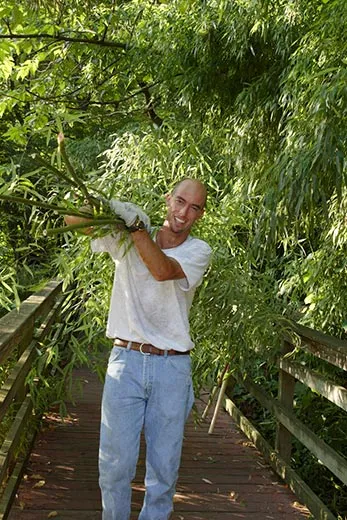
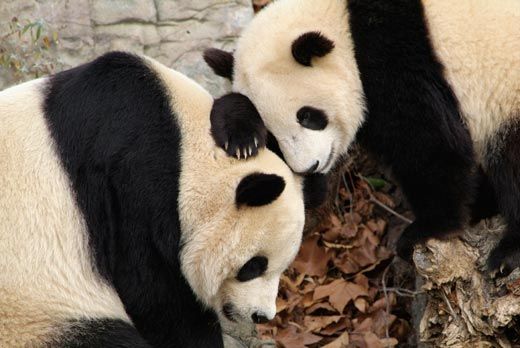
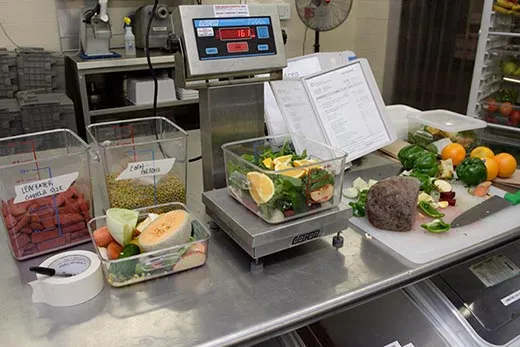
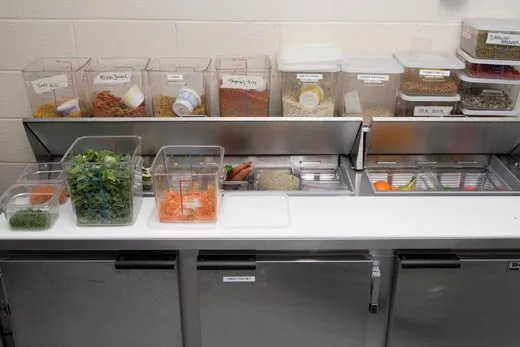
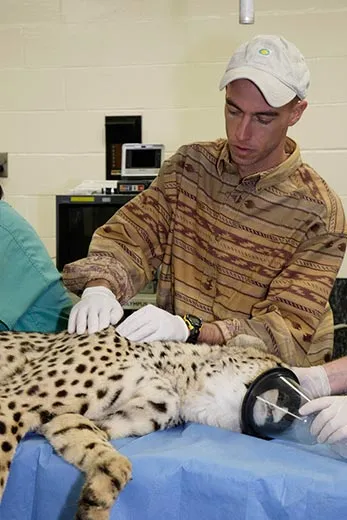
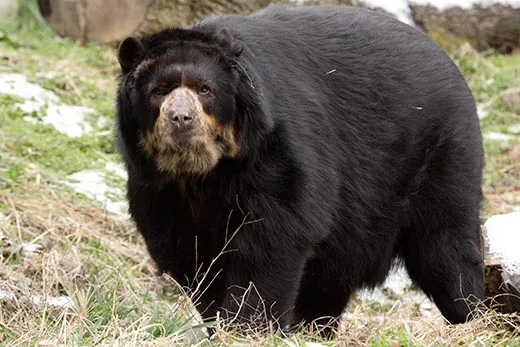
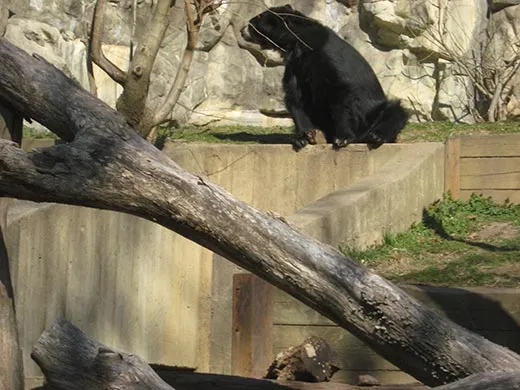
/https://tf-cmsv2-smithsonianmag-media.s3.amazonaws.com/accounts/headshot/joseph-caputo-240.jpg)